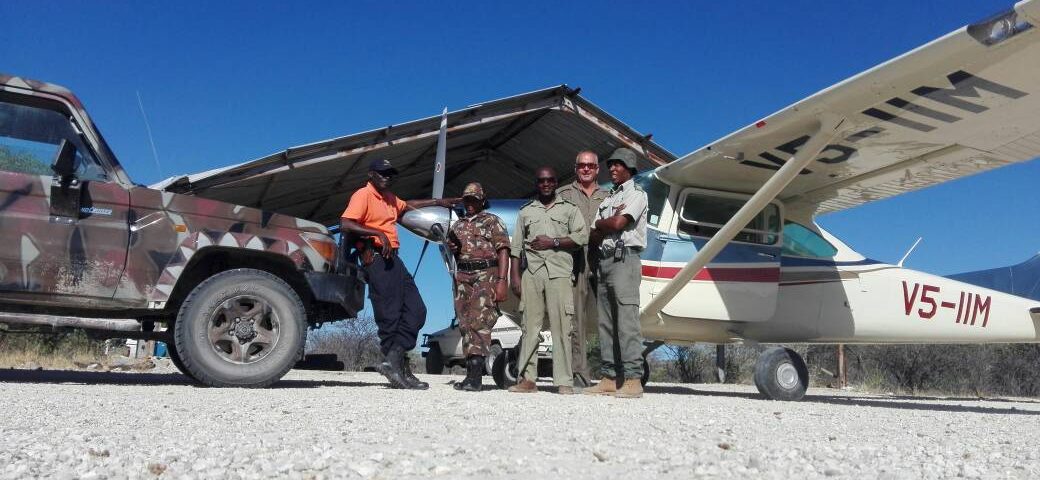
The Hidden Wonders of Hobatere
January 30, 2018
Love on Valentine’s Day in Namibia
February 13, 2018Taking Conservation to the Skies
January 2018 – Taking stakeholder collaboration to new heights, Wilderness Safaris Namibia, in partnership with the Namibian Special Field Force, Save the Rhino Trust (SRT), Westair, Journeys Namibia and the Ministry of Environment and Tourism (MET), recently concluded yet another successful aerial security patrol which took place across northern Namibia from 22 December 2017 to 3 January 2018.
The success of this survey forms part of a unique conservation partnership that has spanned nearly a decade. “We are proud to have been a part of such an exciting group of like-minded conservationists who have worked closely together to ensure the completion of numerous aerial surveys and patrols across every National Park in Namibia, as well as many other protected areas”, commented Wilderness Safaris Namibia Conservation Manager, Conrad Brain.

Wilderness Safaris Conservation Manager, Conrad Brain, on the left, with the Namibian Special Field Force, source: Wilderness Safaris.
Ongoing benefits
The ongoing surveys have given the conservation team the opportunity to not only document and closely observe Namibia’s wildlife populations, but to positively contribute towards the ongoing biodiversity protection of these areas. “In the last two years of aerial security patrols, we have seen a dramatic drop in rhino poaching in protected areas and it is comforting to know that we have been an integral part of the team that has brought about this success. We have also been able to document many significant increases in wildlife populations across Namibia and are now able to say that Namibia has the most successful community-based conservation system on the planet”, he added.
In addition to the security patrols, Wilderness Safaris Namibia recently completed a comprehensive aerial survey of Namibia’s wetlands, in a joint effort with NACSO (Namibian Association of Community Based Natural Resource Management (CBNRM) Support Organisations), MET, the Namibia Chamber of Environment (NCE) and Westair Aviation. The survey covered all rivers and their floodplains in the north-east of Namibia, including the Okavango, Kwando, Linyanti, Chobe and the Zambezi rivers, further demonstrating the company’s commitment to driving conservation research in the broader region.
“Over time, the results from such surveys increase in value as we get immediate results and, more importantly, become a continuous and reliable source of information that can be used to indicate trends in wildlife populations. This will also help us set the course for future management and environmental conservation. With the increased value placed on our wildlife and natural environment, comes the ever-pressing need for us to improve our methods of monitoring and to adapt our conservation approach accordingly. This will remain a priority for our conservation team at Wilderness and with our partners in conservation”, he concluded.


